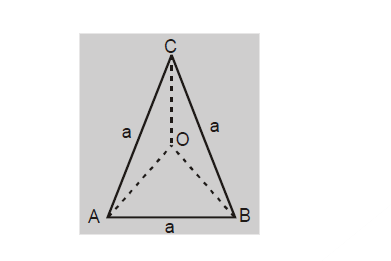In a triangle ABC, if taken in order, consider the following statements:
1.−−→AB+−−→BC+−−→CA=→0
2. −−→AB+−−→BC−−−→CA=→0
3. −−→AB−−−→BC+−−→CA=→0
4. −−→BA−−−→BC+−−→CA=→0
How many of the above statements are correct?
One
Two
Three
Four
The correct Answer is:A
From triangle law of vector addition
−−→AB+−−→BC+−−→CA=0
Only statement (1) is correct.
Topper's Solved these Questions
Similar Questions
Knowledge Check
If →A+→B=→C, and ∣∣→A∣∣=2∣∣→B∣∣ and →B.→C=0, then
A∣∣→A+→C∣∣=∣∣→A+→B∣∣B∣∣→A+→B∣∣=BC→A.→B<0D→A.→C may be zero→a+→b+→c=→0 such that |→a|=3,∣∣→b∣∣=5and|→c|=7.
What is →a.→b+→b.→c+→c.→a equal to ?A-83B−83/2C75D−75/2Consider the following inequalities in respect of vectors →aand→b:
1. |vec(a)+vec(b)| £|vec(a)|+|vec(b)|
2. ∣∣→a−→b∣∣3|→a|−∣∣→b∣∣
Which of the above is/are correct ?A1 onlyB2 onlyCBoth 1 and 2DNeither 1 nor 2
If A,B,C,D are any four points in space prove that −−→AB×−−→CD+−−→BCx−−→AD+−−→CA×−−→BD=2−−→AB×−−→CA
View SolutionABC is an equilateral triangle. Length of each side is 'a' and centroid is point O.Find
(i) −−→AB+−−→BC+−−→CA=?
(ii) −−→OA+−−→OB+−−→OC=?
(iii) If ∣∣∣−−→AB+−−→BC+−−→AC∣∣∣= na then n = ?

(iv) If −−→AB+−−→AC=n−−→AO then n = ?
View SolutionIn a right angled triangle ABC, the hypotenuse AB =p, then −−→AB.−−→AC+−−→BC.−−→BA+−−→CA.−−→CB is equal to:
View SolutionOrthocenter of an equilateral triangle ABC is the origin O. If −−→OA=→a,−−→OB=→b,−−→OC=→c, then −−→AB+2−−→BC+3−−→CA=
View SolutionAssertion A : If A, B, C, D are four points on a semi-circular arc with centre at 'O' such that
∣∣∣−−→AB∣∣∣=∣∣∣−−→BC∣∣∣=∣∣∣−−→CD∣∣∣, then
−−→AB+−−→AC+−−→AD=4−−→AO+−−→OB+−−→OC
Reason R : Polygon law of vector addition yields
−−→AB+−−→BC+−−→CD+−−→AD=2−−→AO

In the light of the above statements, choose the most appropriate answer from the options given below :
View Solution
